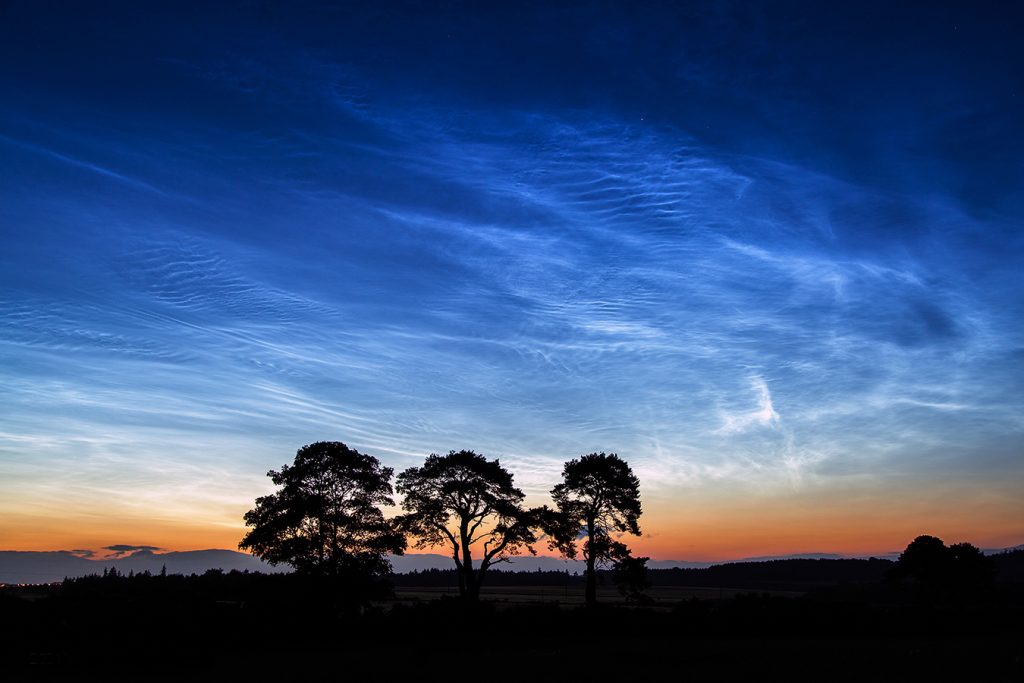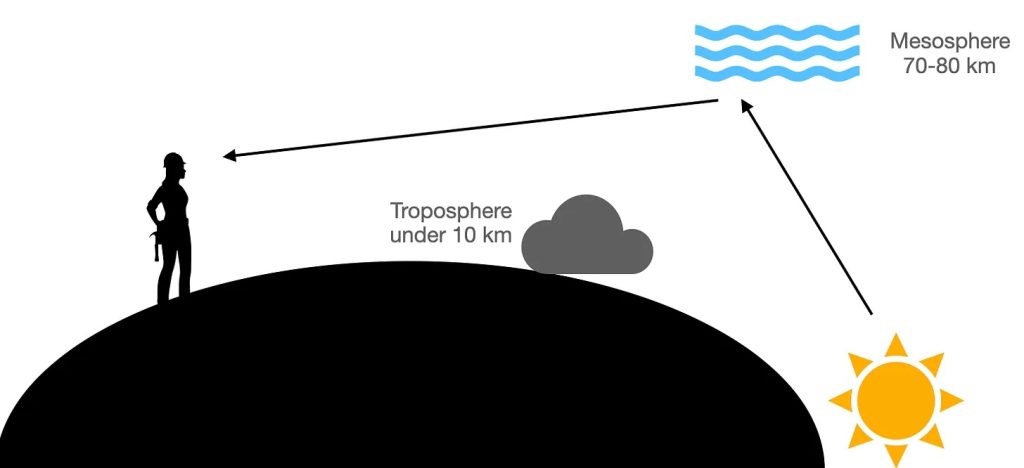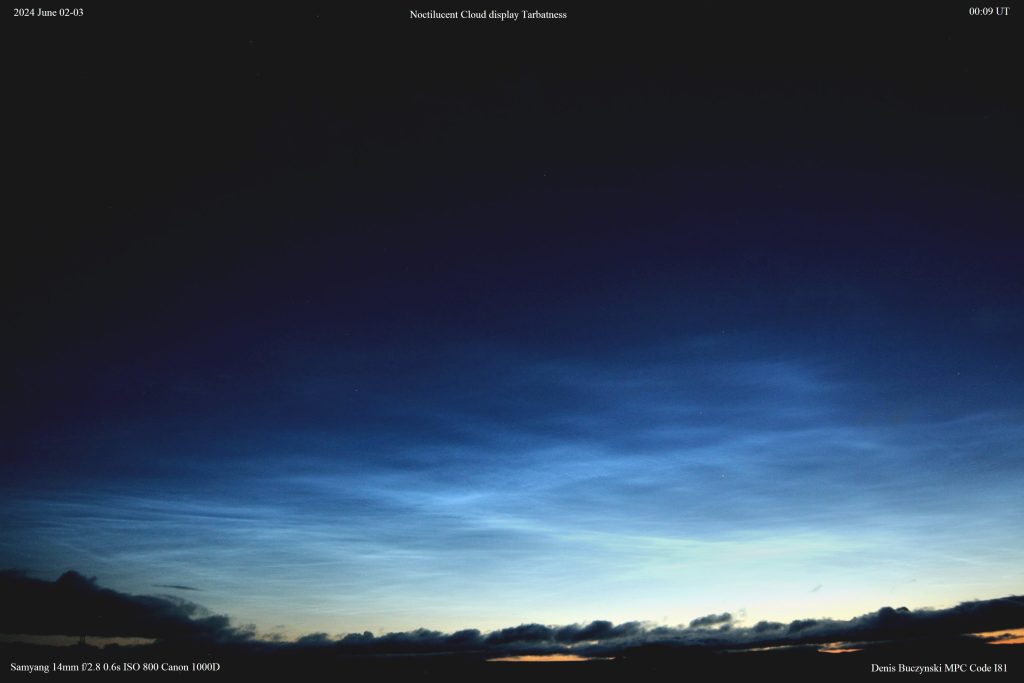2024 June 3
Observer’s Challenge: Photograph Noctilucent Clouds

With the 2024 Noctilucent Cloud season now underway with the first observations of the year coming in, this challenge is to take a photograph of the clouds over the next few months.

What are Noctilucent Clouds?
These beautiful clouds are seen from Mid-Latitude locations (50-65 degrees) in the twilight arch of long summer nights, from about late May to mid August, with a peak around the first week of July. They are about 80-85km above the Earth’s surface and as such the highest clouds ever seen, some ten times higher than cirrus, the highest tropospheric cloud. They are still in sunlight long after sunset. They are often a bluish colour, or intense white, sometimes golden when low near the horizon, and they shine in the sky whereas the lower tropospheric clouds show up dark against them.

The clouds are extremely thin and tenuous, made of tiny ice crystals which brilliantly reflect sunlight. When a sheet of NLC appears edge-on to the observer it appears bright but if NLC is overhead it is usually faint and difficult to distinguish from cirrus or cirrocumulus weakly illuminated by the twilight glow or the moon.
Photography Hints
- Long exposures are typically not required, but may be around a second, so a camera mounted on a tripod will help to stop a blurry picture
- High ISO is not needed – perhaps 400 or 800.
- Set your lens fully open, or one stop down.
- You will need to experiment with the exposure to get the best result for the night.
- Try a time-lapse to see the movement of the clouds over time.
- Use a wide-angle lens for an expansive view of the display.
- Try a telephoto lens to capture detail of the cloudy tendrils.
Submitting your Photographs
Please send your photographs to the Aurora and Noctilucent Cloud Section, and also upload images to your Members’ Album. When emailing to the Section please remember to include details of the observation: location, date and time, equipment and exposure details.

| The British Astronomical Association supports amateur astronomers around the UK and the rest of the world. Find out more about the BAA or join us. |
